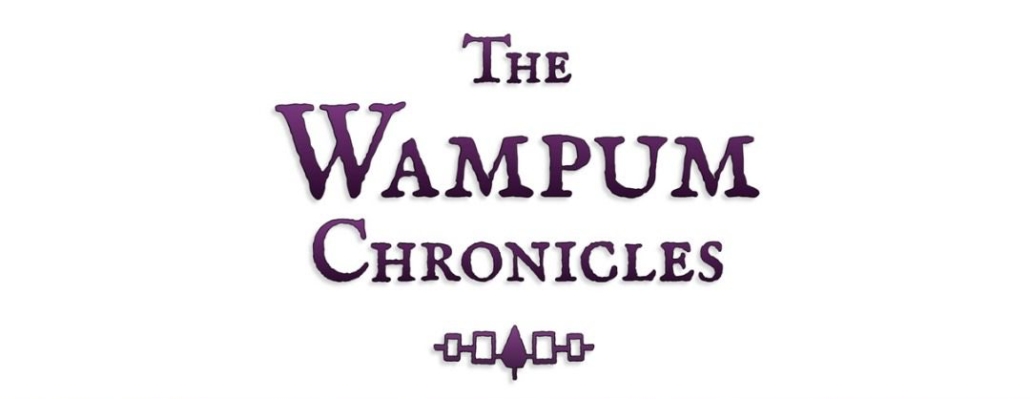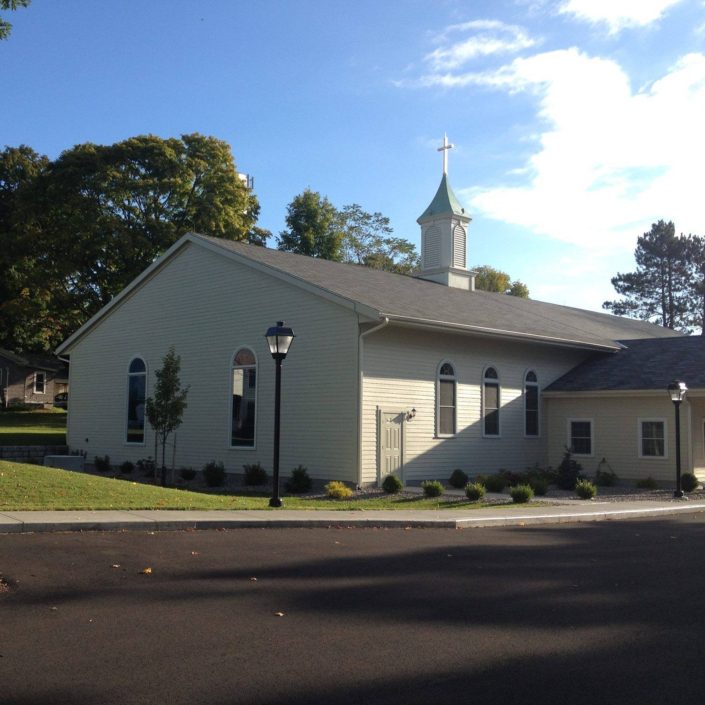
Land Where The Partridge Drums
A History of the Akwesasne Mohawk Nation
The Building of the Stone Church
and The Drawing of the Border
by Darren Bonaparte

The last decades of the 1700’s saw a new development at The Land Where The Partridge Drums. In 1785 a new priest arrived by the name of Father Roderick MacDonell, and it was during his ministry that construction began on the massive stone church that replaced the one made of wood. Tradition holds that much of the work was done by the women of the village. It was completed sometime around 1792, with the bell tower to be added later (Hough 1853:124)
The wife of John Graves Simcoe, the first Lieutenant-Governor of Upper Canada, gave a brief description of her visit to the Akwesasne area in her diary entry of Monday, June 25, 1792. At a home in Glengarry, she describes a meeting with
“A Catholic priest… who has lived five years among the Iroquois Indians at St. Regis (near Cornwall). They have a church, and he performs divine service in the Iroquois, of which he is a perfect master, and he says their attention to the church service is very great, and the women sing psalms remarkably well…we proceeded a league to Coll. Gray’s from whence the Governor went to the Isle of St. Regis, to visit the Indians at their village, where they received him with dancing in a fierce style, as if they wished to inspire the spectators with terror and respect for their ferocious appearance.”
(Harkness 1946:62)
The Drawing of the Border
As we have seen, the aftermath of the Revolutionary War was in many ways just as divisive to the Haudenosaunee as the war itself. When the British and the Americans signed the Treaty of Paris in 1783, they agreed to a rough border between their territories. A part of the border was drawn through Akwesasne at the 45th parallel, but this was largely ignored by American and British authorities. They allowed the Mohawks to come and go across the border as they pleased. The location of the border was readjusted later on. In 1794 Great Britain and the United States signed the Treaty of Amity, Commerce and Navigation, also known as the Jay Treaty, which affirmed the border crossing rights of both countries’ native allies and respected their political independence from Great Britain and the United States. (Miller 1976:74)
“It is agreed that it shall at all times be free of his Majesty’s subjects, and to citizens of the United States, and also to the Indians dwelling on either side of the said boundary line freely to pass and repass by land or inland navigation, into the respective territories and countries of the two parties, on the continent of America, (the country within the limits of the Hudson’s Bay Company also excepted,) and to navigate all the lakes, rivers and waters thereof, and freely carry on trade and commerce with each other…
“…No duty of entry shall ever be levied by either party on peltries brought by land or inland navigation into the said territories, nor shall the Indians passing or repassing with their own proper goods and effects of whatever nature, pay for the same any impost or duty whatever. But goods in bales, or other large packages, unusual among Indians, shall not be considered as goods belonging bona fide to Indians.”
Once Canada became an independent country in 1867, however, she chose not to enact legislation which would have ratified the above provisions. As a result, Akwesasne Mohawks “lost” the protection that the Jay Treaty provided. (In modern times, however, a Mohawk leader launched a legal challenge that may begin to resolve this injustice. Other native groups have joined in the struggle as well. This will be discussed in greater detail in later chapters of this work.)
Next week: The Six Nations and Tyendinaga Reserves
By Darren Bonaparte, historian and author of The Wampum Chronicles. Reprinted with permission.
Darren Bonaparte is a cultural historian from the Akwesasne First Nation. He is a frequent lecturer at schools, universities, museums, and historical sites in the United States and Canada. He has written four books, several articles, and the libretto for the McGill Chamber Orchestra’s Aboriginal Visions and Voices. Darren is a former chief of the Mohawk Council of Akwesasne. He is the creator of The Wampum Chronicles and historical advisor to film and television. He currently serves as the Director of the Tribal Historic Preservation Office of the Saint Regis Mohawk Tribe.














